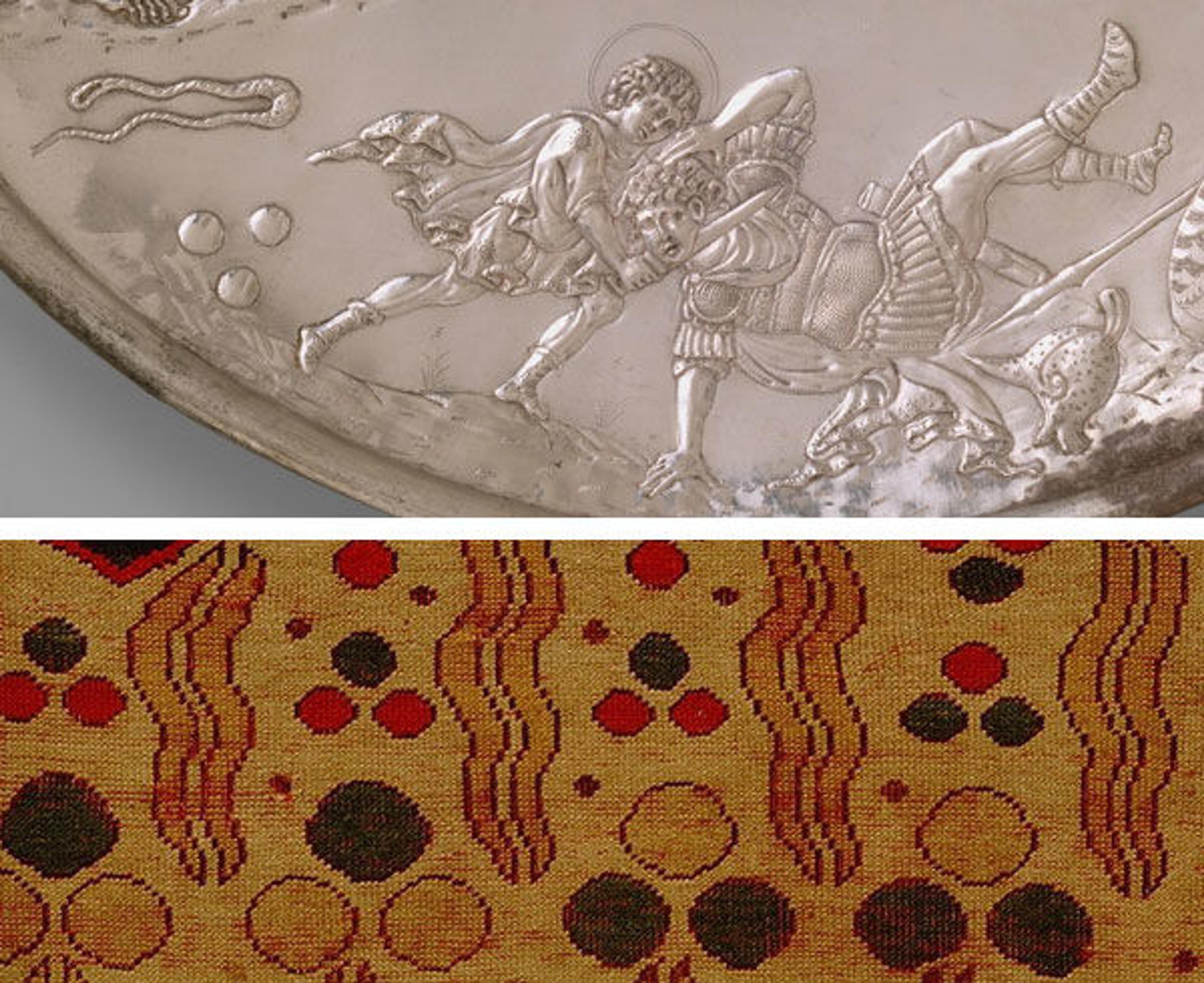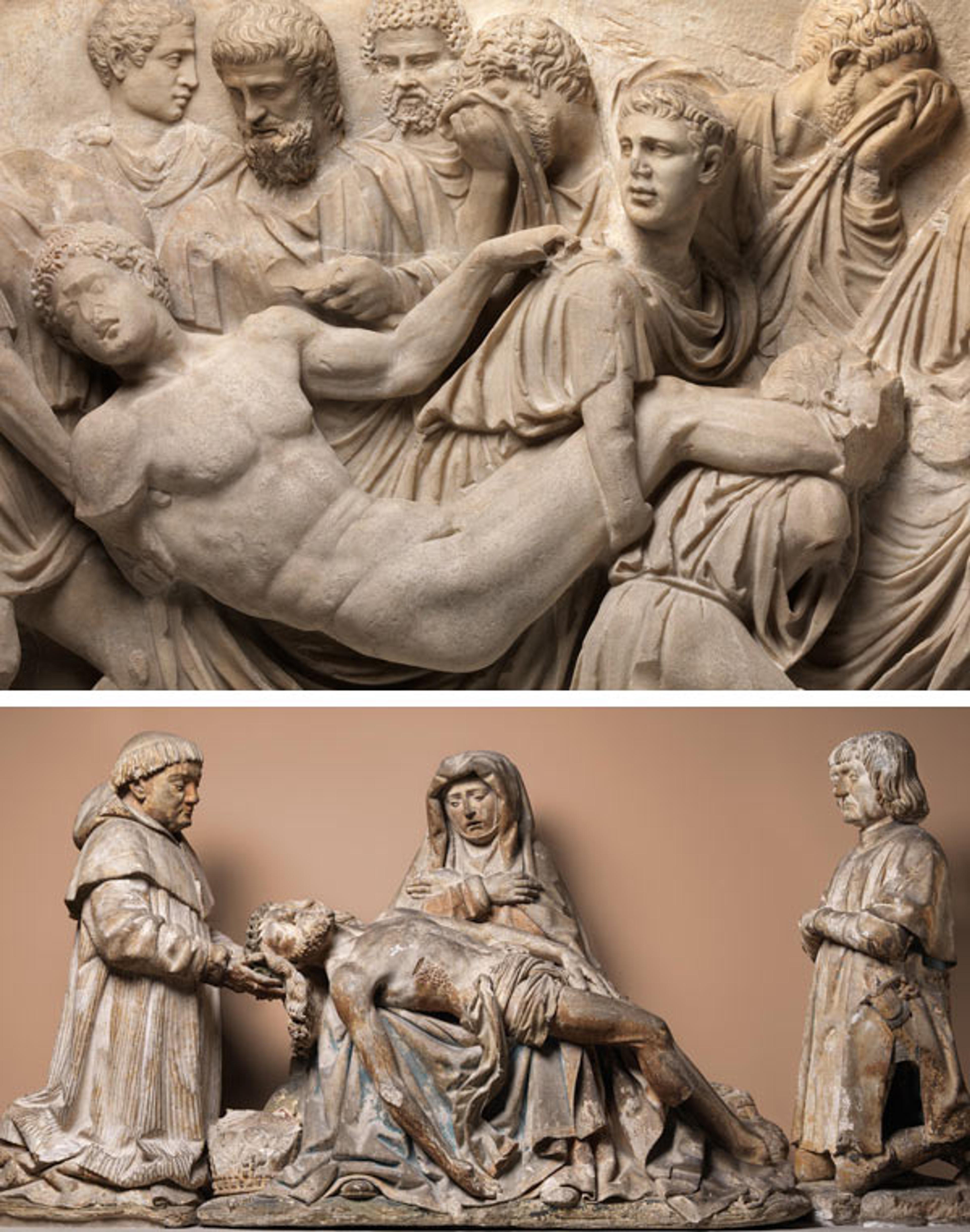The Evolution of Peter Hristoff's My Metropolitan

A collection of the completed panels the author will use in My Metropolitan. Photo courtesy of the author
«The planning phase of my residency at the Met has given me the opportunity to explore the works on view in greater depth, with a focus on both study and documentation. Since January, I have selected one gallery, curatorial department, or exhibition per visit, with the goal of completing drawings of the objects that interest me. Later, while at work in my studio, I then choose the drawings that I would like to paint. I paint each object on an individual panel, which I then hang, salon-style, on the wall. I am attempting to create My Metropolitan—a monumental work that will be determined ultimately by the length of this residency, to be completed by the end of my tenure here at the Museum.»
Throughout my career I have used systems to determine the basic parameters of a work. My Metropolitan will be the most ambitious of my system-based works, one in which I create an epic narrative through depictions of selections taken from the Met's collection. Additionally, like any collection, the implied narrative can be "shifted" by rearranging the presentation of the objects presented in the work.
Being able to spend so much time at the Met has provided me with great lessons in history; I see the fluidity of influences across borders, how one culture's artifacts are reinterpreted by another. Pagan figures in one gallery evolve into saints in another; Islamic motifs that appear in ceramics are then repeated on a European fabric.
The works in the Museum not only give joy and comfort but also lead me down unusual and fascinating rabbit holes. What do the pillows mean in Netherlandish Annunciation scenes? How is it possible that David's sling and stones, as they appear in a silver Byzantine plate illustrating the Old Testament, look just like a motif used in a medallion carpet to imply power by the Ottomans? These observations and subsequent investigations make me feel connected to both history and to the artists and artisans who created the language that engages me as an artist. My Metropolitan is an homage to my artistic predecessors.

Nearly one thousand years later, the slings and stones David used to overcome Goliath appear as a motif used by the Ottomans to imply power. Top: Plate with the battle of David and Goliath (detail), 629–30. Made in Constantinople. Byzantine. Silver; Overall: 19 7/16 x 2 5/8 in., 203.9oz. (49.4 x 6.6 cm, 5780g). The Metropolitan Museum of Art, New York, Gift of J. Pierpont Morgan, 1917 (17.190.396). Bottom: Ushak medallion carpet on white ground (detail), first half 17th century. Turkey. Islamic. Wool (warp, weft and pile); symmetrically knotted pile; Rug: L. 306 in. (777.2 cm), W. 153 1/4 in. (389.3 cm). The Metropolitan Museum of Art, New York, Gift of Caroline and Joseph S. Gruss, 1984 (1984.69)

Visual depictions of grief in the Met's collection transcend time and culture. Top: Marble sarcophagus fragment (detail), mid-2nd century A.D. Mid-Imperial, Antonine. Roman. Marble, Luni and Pentelic; 38 1/8 in. x 8 3/4 in. x 46 7/8 in. (96.8 x 22.2 x 119.1 cm). The Metropolitan Museum of Art, New York, Rogers Fund, 1920 (20.187). Bottom: Pietà with Donors (detail), ca. 1515. Made in Biron, Perigord, France. Limestone, traces of polychromy; Overall: 43 3/8 x 92 1/2 x 22 in. (110.2 x 235 x 55.9 cm). The Metropolitan Museum of Art, New York, Gift of J. Pierpont Morgan, 1916 (16.31.1)

A traditional Iznik plate made for the Imperial Court (left) is reinterpreted for the nineteenth-century Western market (right). Left: Dish depicting two birds among flowering plants, ca. 1575–90. Turkey, Iznik. Islamic. Stonepaste; polychrome painted under transparent glaze; H. 2 3/8 in., Diam. of rim: 11 3/16 in. (28.4 cm). The Metropolitan Museum of Art, New York, Gift of James J. Rorimer in appreciation of Maurice Dimand's curatorship, 1933–1959, 1959 (59.69.1). Right: Minton(s) (British, Stoke-on-Trent, 1793–present). Plate, 1881. British, Stoke-on-Trent, Staffordshire. Hard-paste porcelain; Diameter: 9 1/2 in. (24.1 cm). The Metropolitan Museum of Art, New York, Gift of Robert L. Isaacson, 1988 (1988.404)
Related Link
Now at the Met: "My Met: Peter Hristoff's Connections with the Museum" (October 1, 2015)
Peter Hristoff
Peter Hristoff is the 2015–16 artist in residence in the Education Department and Department of Islamic Art.